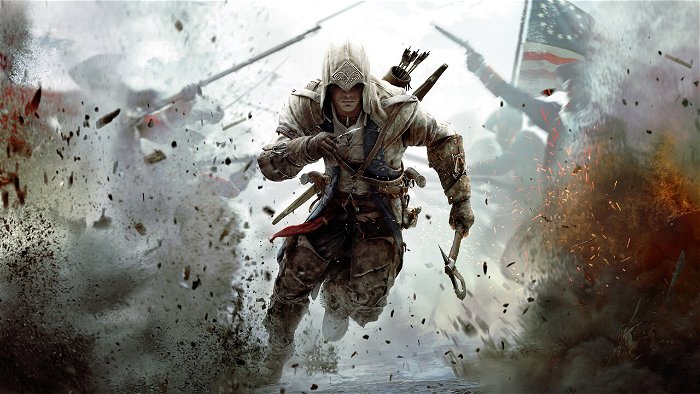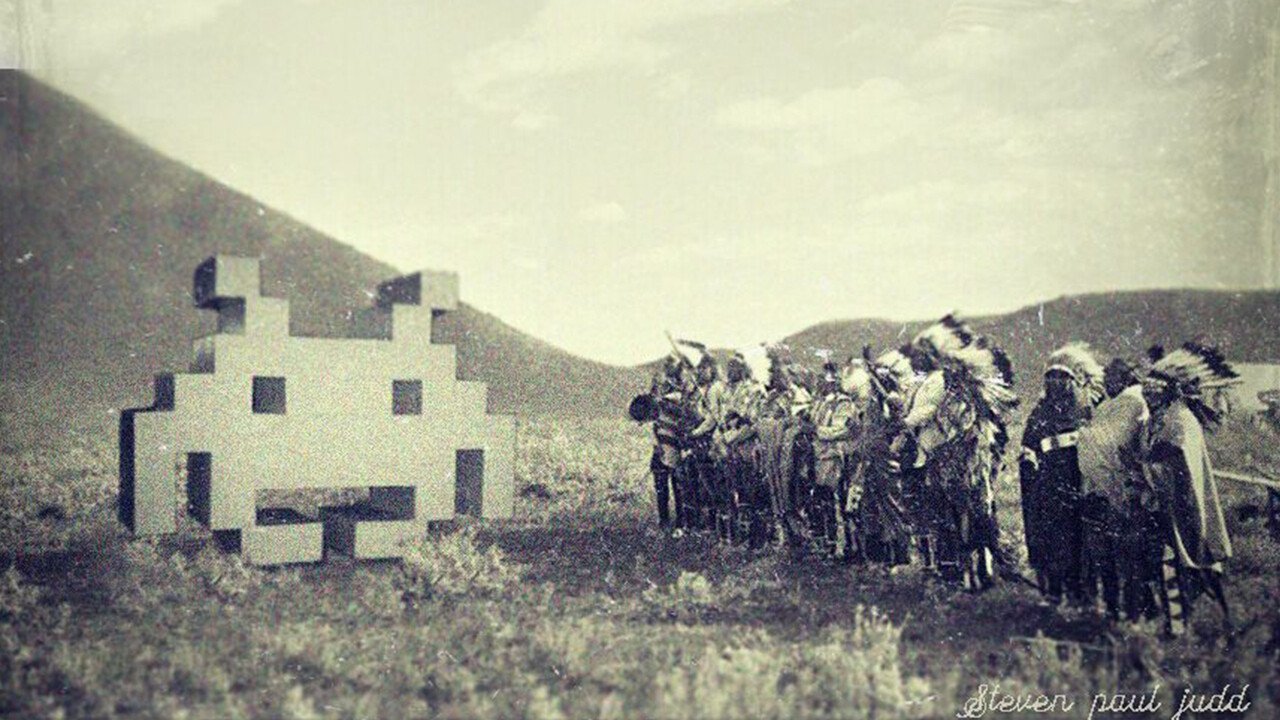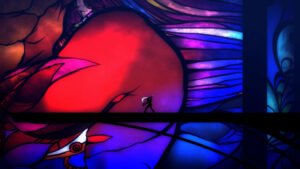Indigenous artists are creating amazing things with digital media, building on ideas of the past and merging them with the new technologies of the time. The imagineNATIVE Film+Arts Festival in Toronto hopes to showcase a selection of these e-works for the public to see.
This year is a bit different than previous years. It will feature a Digital Media Art+Cade that will feature indigenous-made gaming, digital apps, and virtual reality experiences. This year, the festival will feature Invaders, a game taking the classic concept of Space Invaders and flipping it on its head.
We were lucky enough to get to chat with Elizabeth LaPensée, Ph.D., veteran game developer, and creator of the game Invaders. In a very candid chat, she went over what the festival offers the indigenous community, along with anyone who may be interested in indigenous culture. We also went into detail about how these new interactive experiences offer new ways for indigenous peoples to tell their own stories along with how mainstream games have told the Native stories up to this point.
CGMagazine: Can I get you to describe what the imagineNATIVE Festival is?
Elizabeth: imagineNATIVE Film and Media Arts festival is the leading indigenous media festival. It brings together indigenous creatives from all across the world. It’s really exciting because there’s a wide variety that you get to see there and people will make the effort to come out. They’ll travel from all over these different places, so you get to see films, there’s music events, there’s the new media category and this year is the first time they’re going to have an ‘Art+Cade,’ they’re calling it, for games. In other years, they’ve had new media submissions that are in galleries or exhibits and they have a variety of different arrangements, but this year’s the first year where they have a specific portion dedicated to just games, which is really cool. It shows that we’re growing and we’re actually making enough games that that can be possible.

CGMagazine: So what was the selection process for these games? Were they built specifically for the festival, or were they games that were previously built that fit the festival’s mandate?
Elizabeth: It varies. The games that were made through ‘IndigiRoutes,’ they knew that those were going to be shown at imagineNATIVE. So the whole time that they were developing those and working on those, they knew that they had a youth venue. For the rest of the submissions though, there’s a festival submission process where you fill out a form—all of your content is created prior to the festival and the submission deadline, obviously—and then it goes through a committee review; so there’s a specific new media committee, and that committee determines what gets in and what doesn’t get in. And then the ones that are selected get shown. So, it’s just like Indiecade or any of the independent games festivals. It’s that kind of process.
CGMagazine: And how did you get involved with imagiNATIVE? Were you one of the people who helped start it? What was the process of you getting involved with the festival?
Elizabeth: I’ve just frequently submitted to them. I think that I’ve never formally been a part of organizing. I think it’s purely just been that I’m one of very few people who are involved in indigenous games so they think to talk to me about it. And I think that also through Aboriginal Territories and Cyberspace, the work that’s happened there, they’ve won the new media category twice and both of those projects, the year of the Skins game development workshop, I was involved with that workshop. So there’s been work that’s been ongoing, but I’ve never been formally involved with the organization process.
CGMagazine: Tell me a bit about what your background is in indigenous game design.
Elizabeth: I started off as a gamer, obviously, looking at what was available to me to play and what I wanted to play, and that was pretty much where it started. I was just doing mods and whatever I could from my early teens, just finding ways to express myself and then eventually I went on the path on getting a PhD so I could grant-fund games so I could release games for free. Because, while it would be great to be in a situation where I could make games and sell them and that’s my living, the reality is that that can be very inaccessible to a lot of our actual community members. So I wanted to find an alternate way to get this kind of experience, done in our way, to communities. I’m still working on that process, I’ve finished the PhD at this point and I have worked on grant funded games, and they have always been free.
And so a lot of my game work has been about health and wellness for communities, about traditional land knowledge, about our foods and plants and medicine knowledge. A lot of those games have had those aspects in them. What I’m working on doing now is finding that balance between a commercially viable game, and games that pass on teachings or messages. So that’s where Invaders comes from, it’s trying to find that sweet spot where this is commercially viable and replayable and it’s fun and the foundation is the gameplay itself, but also it has a message at the same time. And that’s the kind of work you’re going to see coming out over the next while here. That kind of edgier and more accessible game. Because this is what I’ve found, I think Invaders is probably the most successful game that I’ve ever worked on, because a lot of the others have been in museums before; they’ve actually been in the communities, only. I worked on a board game that stayed only within the community because it passes on the knowledge so well that it would be unsafe for that game to be outside of the community.

So it’s really good work but you have to really pay attention to each project and what its purpose is for each community. I wait for communities to come to me and ask me if they’re interested in making a game. I don’t make a point of going into communities and saying that this is the right way to do things, because I don’t think that that is necessarily the case. I don’t think that games should ever replace community interactions or other services; I just think it’s another way to pass on knowledge, to encourage intergenerational connection among community members.
CGMagazine: Can you tell us a bit about what Invaders is and where the concept came from?
Elizabeth: Sure! So Steven Paul Judd is a Kiowa-Choctaw artist who created an art piece of warriors facing off against the Invaders from the original Space Invaders. So it was just art, then it became a t-shirt for NARF, and I got the shirt and I was wearing it and was like “…this should be an actual game. Like, we should be able to shoot the invaders.” And so I did that. So I asked him for the art and he wanted it to be mobile, I was just going to put it on the web, that’s all I wanted. It wasn’t supposed to be a big thing. He enjoyed playing it so much, and everyone who play-tested it enjoyed it so much that naturally it had to go mobile. It’s really good that it went mobile because I think that it shown me that there’s a huge audience in the mobile space. Of course, there always has been, but this put me in that space finally.
The thing about that game is, there’s layers of meaning in there and I do my best to try to leave it up to each player to make the meaning they want to make. That’s the most important thing to me with any of my work: art or comics or games or the animations, what’s most important is what that person makes out of it. Having said that, in Invaders, there were two things I wanted to do with that. The first was make us think about what the word ‘invaders’ means. Thinking back to Space Invaders and thinking back to aliens, what does it mean to have an ‘alien encounter?’ And we are still recovering from the process of colonization and the process of invasion that happened to us, so in what ways is it safe for us to go after those invaders, that idea of invasion, and express violence, but in a playful way. And the second part of it was, I wanted to play with the mechanics a little bit. So for example, your lives are not represented by numbers. There’s no numbers. Instead, it’s the community around you. So, I’ve noticed that when people play and they’re kind of wondering why the other warriors with you aren’t shooting, too. But when you get hit, you lose one of those warriors, and you feel it. So I wanted to show the actual visual loss of life that happens because of the wars that took place through the process of colonization. It’s about creating that actual visual impact to really express that these lives weren’t something you can put in numbers; these were real people, and these were real lives that got lost along the way.
CGMagazine: On that note, do you feel that the video game industry now is neglecting the Native audience, or not touching on Native issues at all? Or do you feel there is some representation of indigenous peoples within mainstream videogames?
Elizabeth: There’s more now than there was before. For the most part, there’s definitely more awareness and attention to try to involve consultants than there has been in the past. That is true; however, I still think that there’s so much more to be done. With Never Alone, they created the model of showing a non-indigenous game company can collaborate in an inclusive way with an indigenous community to create a strong game. They have opened up the market for consoles. And what that has done for those of us who are actual indigenous game developers, I think that’s very important to note. I have mad respect for the work that Never Alone has contributed, but they don’t have Native programmers, they don’t have Native designers, and they don’t have Native artists. They’re not actually paying us to be part of the development. They’re paying us for stories, and knowledge and aesthetics. And I want to get to a point where we actually have ourselves, we are mobilized in those teams. That’s how it should be. And there are a lot of Native developers who are working on games that are non-Native.

CGMagazine: Do you feel any mainstream games have managed to achieve any of that— games that represent Natives in a proper way—or have they mostly been window dressing up to this point?
Elizabeth: I think that other than Never Alone, which did in its mechanics, there was some influence. So, for example, the wind can be a force with you or against you. There’s a neutrality to it, and that’s an indigenous thing. So, in terms of mechanics and along with representation, I believe that Never Alone is the standalone example of what can and should be done.
Assassin’s Creed 3 comes close because they involved a consultant; however, as Manuel Marcano points out, every other game that they’ve done, the lead has never had to have the process of time travel explained to them, they would just activate it and it just exists and is there and they don’t need a walkthrough for it. But when they created the character of Connor, he needs this like ‘eagle flight’ big ordeal for him to understand it. So while the intention was there, there is so much that non-indigenous developers are going to miss. There’s a lot that they did that was good in that game. They involved real language speakers, for example. They had songs in the language.
There’s definitely more that they did, but I think that we need to be looking at the games that were made though IndigiRoutes and I think we need to also be looking at the games that were made through Skins game development project where it was all Mohawk youth. And we need to be looking at those as examples and finding ways that those can be done on an industry or commercial level, because for a lot of us, it’s just inaccessible. Like the idea, for me, of creating a console game is just far out of my range.
So, right now, I’m gonna focus on mobile and on much smaller, replayable, experiential games that are about capturing the core of an experience. Other than that, there have been some really major missteps and my greatest hope is seeing less and less missteps.
CGMagazine: Do you think that events like imagineNATIVE help this move forward of game design with Native values?
Elizabeth: Definitely, because they’re facilitating not just the showing of the work but the creation of the work. And that’s what it all comes down to: we constantly need to be making. We cannot have a situation where there are a handful of people who have access to this technology.
Technology is more and more open and free, and there are ways of doing, more so than ever before. So John Romero, again, who’s Yaqui and Cherokee himself, says it best. He had to go to stores and libraries and just hang out on the computer and he taught himself how to code. That was the only way he did it. And so, what he had then, compared to what we have the ability to access now, is so much vaster. So it’s just matter of constantly encouraging the next generation.
But I also think that there are very capable filmmakers, writers, artists, animators, and design minded individuals who could make a shift into working on games if they wanted to. But we need workshops to make that possible. To even let them know, “here’s the process for how you go about it” and have indigenous Game Jams, have opportunities for people who are not just youth, and that’s what we’re missing right now, I feel. My greatest hope is to see indigenous Game Jams, residencies, workshops, and other kinds of experiences so that we can catch-up people who are active at an industry level right now.
CGMagazine: Where can people find your work, along with the work of some of these other people if they’re unable to make it to imagineNATIVE this October?
Elizabeth: The best way to find my work is my website (Elizabethlapensee.com). I always put everything there. Then, for anyone who’s looking for anything else, I think the imagineNATIVE website does a pretty stellar job of giving descriptions of all of the games and laying out links to other resources. I know that IndigiRoutes probably has a website, but also be looking for the Initiative for Indigenous Futures having a symposium during imagineNATIVE. It’s the first-ever symposium of this kind, and those of us who are part of the Initiative for Indigenous Futures are going to get together and have a great deal of discussions and presentations and I’ll be doing a write-up about that. And so, at some point, there’ll be an article out there about that.




